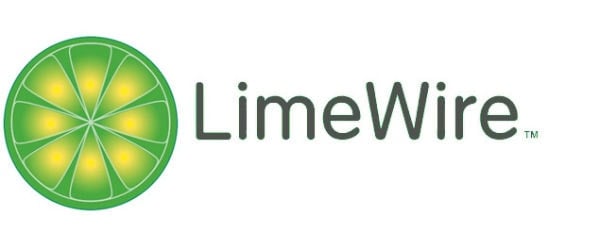
How Does FTP Work and How Can It Help You?
January 26, 2016
Colocation America Reviews: Breakfast
January 29, 2016It’s Monday, you’re shaking off the cobwebs of the weekend, and honestly, you need something to wake you up. Coffee just isn’t doing the job anymore. You know what would help? A nice trip down Nostalgia Lane! This week, we take a look back at how we consumed and shared media in the early days of the web and how the standard has changed.
I remember downloading my first song off Napster. It was 4MB, it took 3 hours, and it was Jay-Z’s “Can I Get A…” because, as a small frail white kid from the suburbs, his music spoke to me. But that was my first foray into online media and I never thought—in my wildest teenage dreams—that we would get to the point we’re at now. Here are a few of the most ubiquitous clients and programs that spawned a huge industry of file sharing and media consumption:
IRC, Usenet, etc.

IRC’s, Usenet and other platforms were the early file-sharing pioneers and laid the groundwork for all the blogs, forums and mailing lists that you see today. These were before my time, in the early EARLY days of the web, where people would go to share files and information, spread across various servers. There was a lot of news and information, a lot of software, and a few entertainment sources for music and movies if you could find them, but otherwise, this was the Internet getting its feet underneath it for the file-sharing bonanza that was about to come.
Napster
If IRC and Usenet were the backbones of a file-sharing economy, Napster was like the industrial revolution. With an easy-to-use interface, Napster allowed the Regular Joe to download his favorite songs in an instant (depending on your internet connection and whether someone called the phone line while you were downloading). That 3 hours for a Jay-Z song anecdote wasn’t a lie— 14.4k dial-up was the bane of my existence.

Photo Credit: wikipedia.org
Napster had the great UI, but there was also a lot of crap on it: songs that would be chopped and screwed, songs that would be lower quality than what you were looking for, songs that were completely different songs altogether than what you were looking for, etc. It was heartbreaking to wait 1-3 hours for a song to download, only to find that it’s the edited version, or of poor quality and then have to start the whole process over again. We all know what ultimately happened to Napster: Lars Ulrich.
The Gnutella Network Clients
Before Napster had sunk into the grave via copyright infringement lawsuits, a number of P2P file-sharing clients had popped up to ascend to the pirating throne, among the most popular being Limewire, Kazaa, and BearShare, all propped up by the Gnutella network of P2P sharing. These clients now allowed users to download other media as well, including TV, movies, videos, books, and software. The major problem of these various clients, however, was the sheer amount of viruses, malware, and other nasty stuff not only on the network but often times attached to the software itself. Kazaa, one of the more popular clients—and one that I used personally—was basically all malware, adware, and spyware.

Photo Credit: dayintechhistory.com
It was around this point that the RIAA, MPAA, and the federal government were going lawsuit-crazy, and had begun targeting individuals on these networks for illegally downloading or sharing the media. So not only did Napster, Limewire, and Kazaa all suffer the same shutdown, but now your sweet GramGram was a target too, all because she wanted to hear old Lawrence Welk records.

Photo Credit: wikipedia.org
In response to all the shutdowns, the P2P file-sharing community went underground and began torrenting, rather than using a single client for their file-sharing needs. The Pirate Bay, the world’s most popular torrent site, gained some traction, and clients like BitTorrent, µTorrent, Transmission, and Acquisition popped up as major programs for file-sharing, that all accessed the torrent sites and search engines to locate the files.
What Does the Future of File Sharing Hold?
Well, in response to people stealing all of their content, many companies opted to take a look at how they are operating and shift their focus on streaming and subscription services that provide this same content, now with the ability to take it with you wherever you go in the form of a standalone app. Instead of hopping on Pirate Bay and downloading a movie, you can watch it on Netflix or rent it on iTunes, or fire up Hulu and binge on It’s Always Sunny in Philadelphia, then switch from watching on your TV to your tablet instantly instead of waiting for the entire season to download on your PC. Music subscription services like Pandora, Spotify, iTunes Music, Google Music, and more now allow you to save/download as much music as you’d like for a nominal fee, with the added ability to listen offline and take your music with you.
I lived through this whole Napster/Limewire/Kazaa/Torrent fiasco, and simply adding a song to my playlist on Spotify and listening instantly is so much better than hoping to God nobody calls the house while I’m in hour 2 of a 3 hour download for Christina Aguilera’s “Genie in A Bottle”. Thank God somebody finally paid Lars Ulrich.

Photo Credit: hablatumusica.com

1 Comment
Gotta be honest, I don’t personally find Netflix, iTunes, Crave, Hulu or other services all that convenient. They all suffer from the same copyright bs that torrenting and other p2p clients aim to avoid. Half the time I want to watch an old movie on most streaming services, it’s no longer available. Where’s the on-demand in that? I’d much rather continue running my own 40TB Servers with FreeNAS and Emby or Plex and continue to stream them at higher qualities than any streaming service.
Thanks